Solar eclipse of May 19, 1985
A partial solar eclipse occurred on May 19–20, 1985. A solar eclipse occurs when the Moon passes between Earth and the Sun, thereby totally or partly obscuring the image of the Sun for a viewer on Earth. A partial solar eclipse occurs in the polar regions of the Earth when the center of the Moon's shadow misses the Earth. It was visible near sunrise on May 20th over Japan and northeast Russia, and ending at sunset on May 19th over north Canada and Greenland. May 19 is the 139th (140th in leap years) day of the year in Gregorian Calendar. There are 226 days remaining until the end of the year.
| Solar eclipse of May 19, 1985 | |
|---|---|
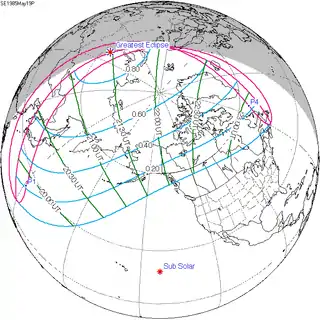 Map | |
| Type of eclipse | |
| Nature | Partial |
| Gamma | 1.072 |
| Magnitude | 0.8406 |
| Maximum eclipse | |
| Coordinates | 63.2°N 81.1°E |
| Times (UTC) | |
| Greatest eclipse | 21:29:38 |
| References | |
| Saros | 147 (21 of 80) |
| Catalog # (SE5000) | 9476 |
Related eclipses
Eclipses of 1985
Solar eclipses of 1982–1985
This eclipse is a member of a semester series. An eclipse in a semester series of solar eclipses repeats approximately every 177 days and 4 hours (a semester) at alternating nodes of the Moon's orbit.[1]
Note: Partial solar eclipses on January 25, 1982 and July 20, 1982 occur in the previous lunar year eclipse set.
| Solar eclipse series sets from 1982–1985 | ||||||
|---|---|---|---|---|---|---|
| Ascending node | Descending node | |||||
| Saros | Map | Gamma | Saros | Map | Gamma | |
| 117 | 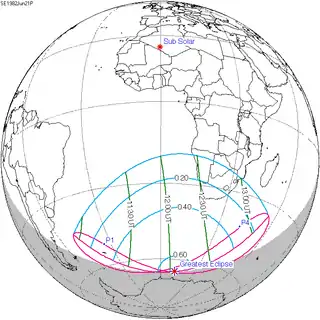 1982 June 21 Partial | -1.21017 | 122 | 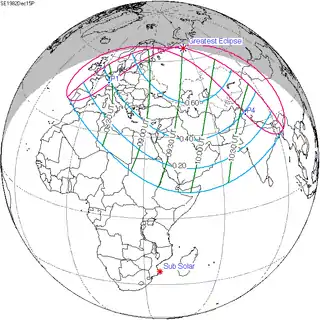 1982 December 15 Partial | 1.12928 | |
| 127 | 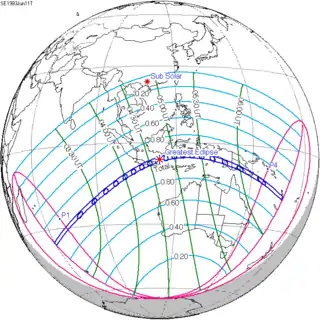 1983 June 11 Total | -0.49475 | 132 | 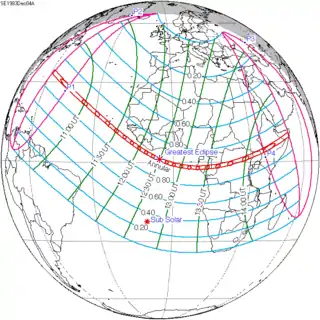 1983 December 4 Annular | 0.40150 | |
| 137 | 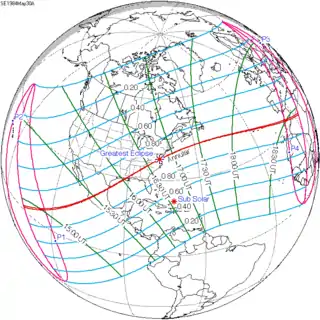 1984 May 30 Annular | 0.27552 | 142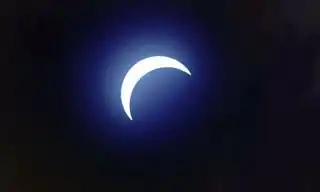 Partial from Gisborne, NZ |  1984 November 22 Total | -0.31318 | |
| 147 |  1985 May 19 Partial | 1.07197 | 152 | 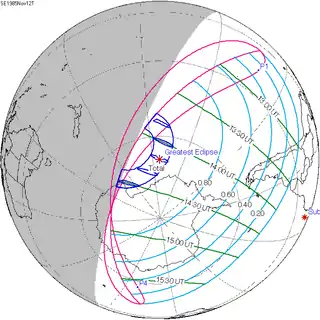 1985 November 12 Total | -0.97948 | |
Metonic series
The metonic series repeats eclipses every 19 years (6939.69 days), lasting about 5 cycles. Eclipses occur in nearly the same calendar date. In addition, the octon subseries repeats 1/5 of that or every 3.8 years (1387.94 days). All eclipses in this table occur at the Moon's ascending node.
| 22 eclipse events between December 24, 1916 and July 31, 2000 | ||||
|---|---|---|---|---|
| December 24–25 | October 12–13 | July 31-Aug 1 | May 18–20 | March 7–8 |
| 91 | 93 | 95 | 97 | 99 |
| December 23, 1878 | October 12, 1882 | July 31, 1886 | May 18, 1890 | March 7, 1894 |
| 101 | 103 | 105 | 107 | 109 |
| December 23, 1897 | October 12, 1901 | August 1, 1905 | May 19, 1909 | March 8, 1913 |
| 111 | 113 | 115 | 117 | 119 |
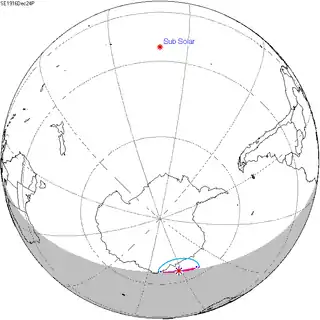 December 24, 1916 |
October 12, 1920 | 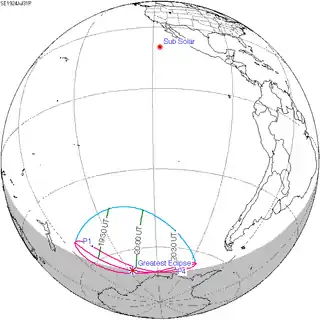 July 31, 1924 |
 May 19, 1928 |
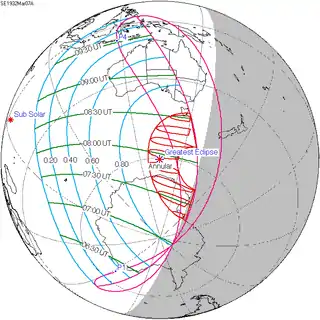 March 7, 1932 |
| 121 | 123 | 125 | 127 | 129 |
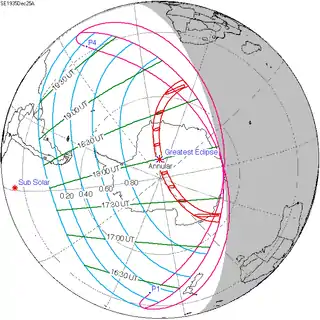 December 25, 1935 |
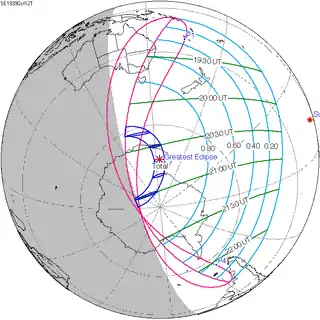 October 12, 1939 |
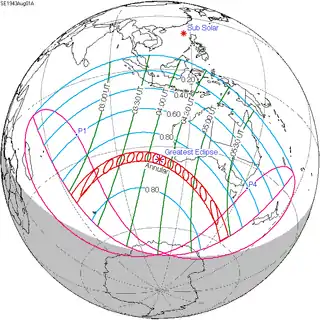 August 1, 1943 |
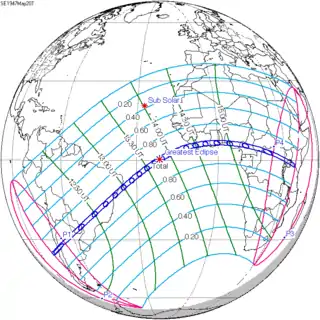 May 20, 1947 |
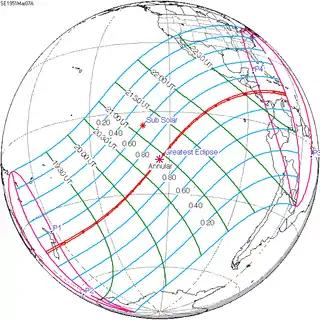 March 7, 1951 |
| 131 | 133 | 135 | 137 | 139 |
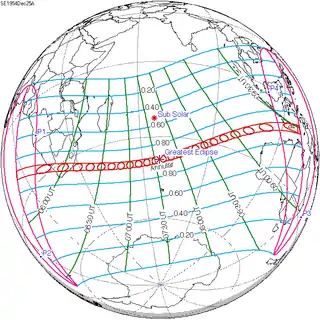 December 25, 1954 |
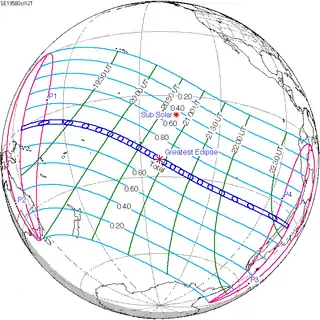 October 12, 1958 |
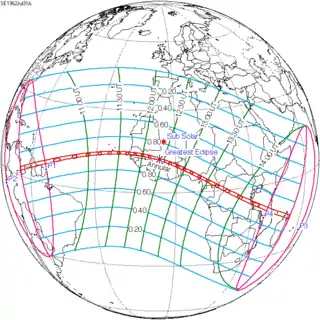 July 31, 1962 |
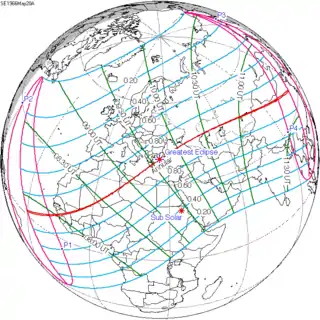 May 20, 1966 |
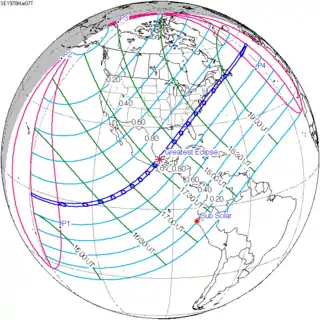 March 7, 1970 |
| 141 | 143 | 145 | 147 | 149 |
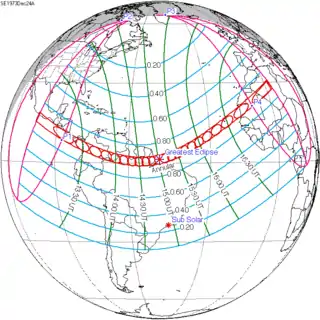 December 24, 1973 |
 October 12, 1977 |
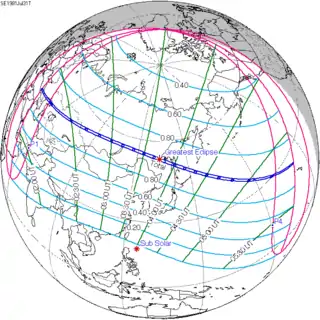 July 31, 1981 |
 May 19, 1985 |
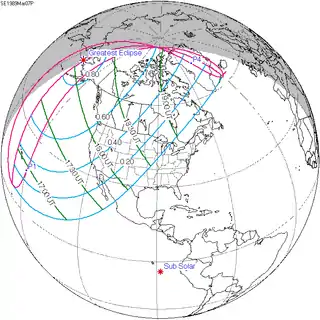 March 7, 1989 |
| 151 | 153 | 155 | 157 | 159 |
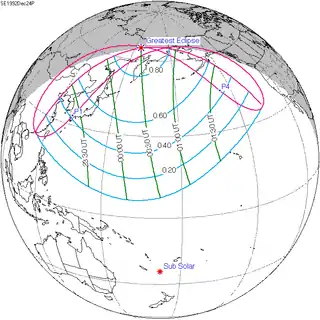 December 24, 1992 |
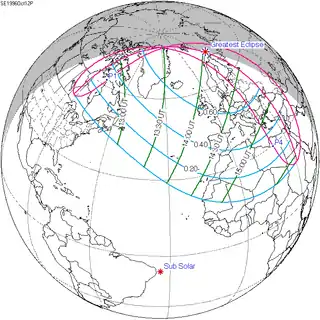 October 12, 1996 |
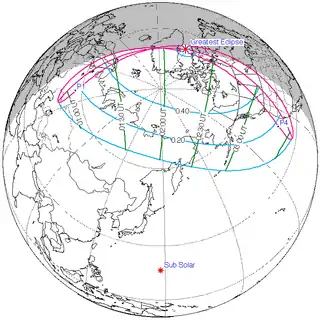 July 31, 2000 |
May 19, 2004 | March 7, 2008 |
| 161 | 163 | 165 | 167 | 169 |
| December 24, 2011 | October 13, 2015 | August 1, 2019 | May 19, 2023 | March 8, 2027 |
References
- van Gent, R.H. "Solar- and Lunar-Eclipse Predictions from Antiquity to the Present". A Catalogue of Eclipse Cycles. Utrecht University. Retrieved 6 October 2018.
External links
- Earth visibility chart and eclipse statistics Eclipse Predictions by Fred Espenak, NASA/GSFC
.jpg.webp)

